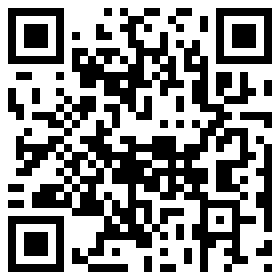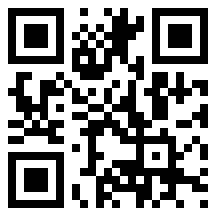The article is entitled Modeling Social Media in Groups, Communities, and Networks: http://www.tesl-ej.org/wordpress/past-issues/volume13/ej51/ej51int/. It's about the importance of teachers developing, nurturing, and interacting in networks and then modeling and demonstrating within those networks in order to scaffold each other's professional development. The Implications section starts out by saying:
"A major key to success in keeping current in one’s field is in nurturing productive contacts within a network ... the skill of leveraging networks is increasingly important in the 21st century in plumbing and aggregating knowledge when that knowledge base is forever changing at an increasingly accelerated pace. For appropriate use of online social networks to be taught in schools, teachers themselves must be familiar with their impact on learning. One problem is that teacher-trainers without sufficient experience with technology and who are rooted in old-school methodologies are simply not modeling new age learning behaviors for their trainees by showing them how to reach out to networks."It was only the second time I had used Wordpress for my submissions, and the first time, for the article I submitted 3 months ago, I scrupulously followed directions including watching a 20-minute screencast on using the interface. But this time around I tried to wing it and missed some steps, resulting in my article being the one to hold up the works as the editors were trying publish the issue. Pressed to finalize my part of the process, I got up at 5 a.m., went through the article one last time, put in some final touches, and hit the publish button, then headed down to my car to drive off to work.
When I commute I listen to my mp3 player, and the program that I had been listening to was from the Worldbridges megafeed, and it happened to be Wesley Fryer speaking with Kim Cofino, who had recorded a keynote presentation for the 2009 K12Online conference entitled Going Global: Culture Shock, Convergence and the Future of Education, http://k12onlineconference.org/?p=424. Worldbridges had hosted a "fireside chat" with Kim, mounted on their website at http://www.edtechtalk.com/node/4613. I had been listening to the first part of the chat earlier, so the part that came on just as I was pulling away from the house was the part of her keynote where she was talking about the importance of nurturing networks, how those already in such networks can model their cultivation for others, and suggesting six ways to start one.
It was uncanny that as I pulled out into Abu Dhabi traffic I heard Kim say almost exactly what I had just been working and re-working in my head in my apartment just then and for the previous week as I massaged my article to completion. Her words resonated with me at just the right moment, and I felt as if a jigsaw puzzle of thoughts inside my head and Kim's were coming together on my drive to work.
I decided to extract the part of Kim's talk where she made those points and share it here: http://goodbyegutenberg.pbworks.com/f/KimCofino2009FiresidechatPLE.mp3
My daily commute is an important part of connecting with my network for me. This is a time when I listen to what others in my network have recorded and podcast online, and I often arrive at work itching to get onto my computer and check out web sites and URLs I've heard mentioned while I was driving to work. Podcasts are a crucible of ideas for me, like Twitter, something I can monitor in the background and extract the nuggets of knowledge that are lurking in the stream as I run the sounds between my ears.
When Kim, and her colleague at International School of Bangkok Jeff Utecht, gave their keynote talk at the WiAOC online conference in May, 2009 (http://www.webheadsinaction.org/node/364), I introduced them by telling the story of when I met Kim in Bangkok while traveling with the FLNW (Future of Learning in a Networked World) traveling roadshow in January, 2008. This story is a great illustration of how networked worlds collide to release energy quantum levels above that of the disconnected component parts.
The FLNW roadshow is an un-event, loosely organized in 2008 by John Eyles who got Michael Coghlan, Trish Everett, and I to meet him in Bangkok for a few days or a week or two, whatever time we could spare, of hopping from one educational institute to another as John worked his way toward Thai TESOL in Chiang Mai and on to a village in Laos where he would deliver some books he had arranged to be donated there. Our first event was a stop at ISB.
- I recorded the event here: http://advanceducation.blogspot.com/2008_01_01_archive.html
- and Kim blogged this: http://www.blogcatalog.com/blog/always-learning/04cc1ccaf9963683f905ae93219700b5
Talk about coming full circle and fitting together more pieces of the jigsaw, I have just re-read that and noticed where Kim said in that post "Not only was it fantastic to have three so well-respected and knowledgeable visitors talk to our teachers in a casual format about their questions, issues and problems, but it was so great to have them reinforce so many of the things Justin, Dennis and I say on a daily basis." So here we are, echoing one another again.
At the time of this event I had never met nor heard of Kim, she had not yet become a part of my network, and I was there simply because John had arranged a van to pick us up and take us to ISB. John had mentioned we had been asked to talk about reading, so I had prepared a slide show on that topic, and as one does when illustrating the future or education in a networked world, I had arranged with Doug Symington on Vancouver Island in Canada to webcast our meeting, which I had hoped to stream from Bangkok out to the networked world at large. We had of course asked in advance about the facilities at ISB and we were told we could have access to anything we wanted, but a disconnect occurred when we arrived on site and found that this was true only if we had specified in advance what we needed, and then their IT people would have allowed us to breach their firewall. However, I arrived and discovered that having arranged with Doug to meet him online at a certain time, I was totally unable to connect to Skype or Elluminate, and I imagined Doug having rearranged his schedule to accommodate ours and having set up a webcast, trying to reach me but being unable to, and not having any way to tell him what was going on.
Meanwhile, the ISB folks had set up their own webcast via Ustream, which they had working, having made the necessary arrangements with IT. And who should be in the chat there but Doug Symington!! So the network had come to the rescue. Doug was in Kim's network, whose tendrils had reached out and roped him in, and all was fine, the network had saved the day.
I find it really fascinating how a system so prone to chaos and entropy so often works through the wisdom of the crowds that populate it to keep the pieces loosely joined all heading in the same direction. Something is quite in synch here, and I hope in this post that I've been able to get at one small part of it.
You can share this post via http://tinyurl.com/advanced100101
Comments from the Twittersphere (Jan 14 and Jan 3, 2010):




 Tag in your DEL.ICIO.US account
Tag in your DEL.ICIO.US account











3 comments:
Hi Vance,
Thank you for the comment and for the link. I will check it out when I have time.
Cheers,
eisensei
PS. I wasn't sure which blog to post to, so I chose this one as its focus seems to be on teacher development.
Hi Eisensei,
Thanks for the arigato (gosaimas). I thought I'd better contextualize this. The comment was to Eisensei's post asking What is Dogme: http://eisensei.blogspot.com/2010/01/dogme-el-what-t.html.
My comment was to try and answer with an example from a teaching some other language as a foreign language perspective. I referred to Stevens, Vance. 2006. Learner strategies at the interface: Computer-assisted language learning meets computer-mediated communication. In Handbook for Arabic Language Teaching Professionals in the 21st Century, Kassem Wahba, Zeinab Taha, and Liz England (Eds.). Lawrence Erlbaum Associates, Inc., a pre-publication version of which I put online here: http://www.homestead.com/prosites-vstevens/files/efi/papers/cairo2004/hbalt-gvs05sep.htm.
My suggestion was, at that URL, scroll to just above and below the section "A syllabus for language learning". I think that's Dogme.
I've elaborated on our comments in the blog post following (in time) or preceeding (if viewed as the one above this one) here: http://advanceducation.blogspot.com/2010/01/is-dogme-for-advanceducation.html
So for further comments on Dogme, head there :-)
Post a Comment